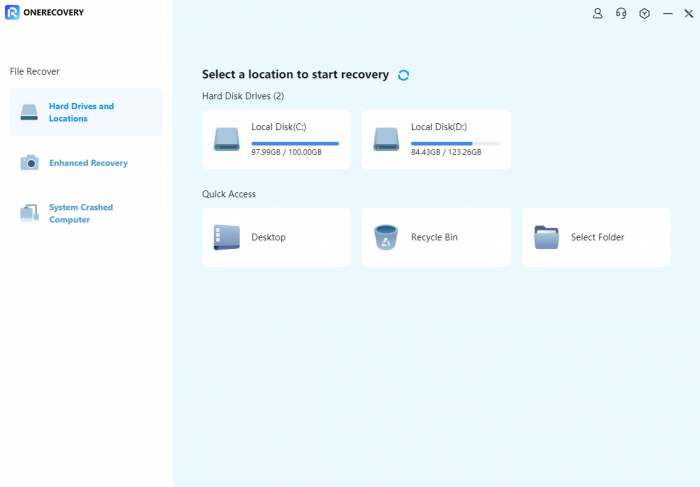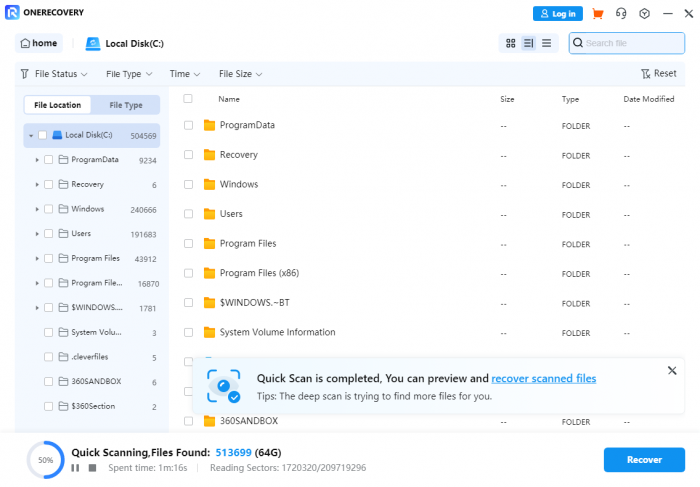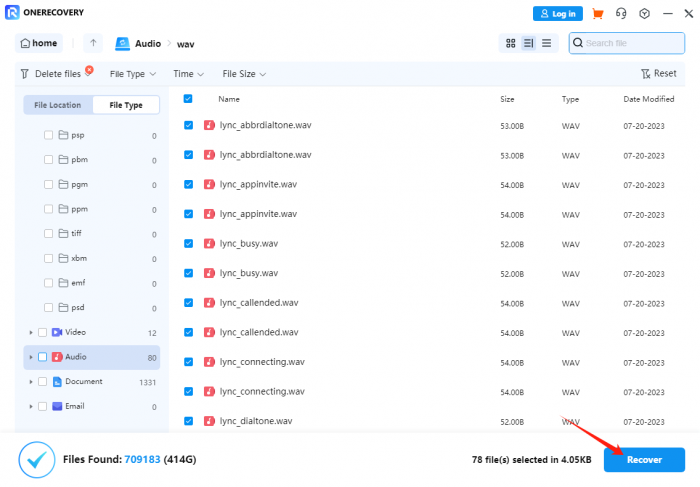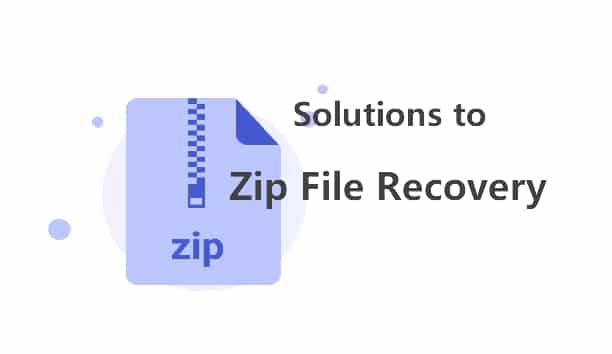Using a hard drive to back up all data on your computer is a common practice for Mac users. Many people typically use external hard drive devices to protect their important information and data security. But what if one day you lose important data on your hard drive? Loss of data can be due to various reasons such as incorrectly deleted files, virus infections, formatted drives, etc. However, the data loss can be salvaged if you act in time. We have listed several ways to recover data from the hard drive on a Mac. Whether you are a beginner or an IT expert, you can learn to salvage your data with ease.

| Method | Pros | Cons | Fee | Time | Operation difficulty |
| Disk Utility | Built-in freeware | Recover the disk without previewing the missing files | Free | 1-2 hrs | Easy |
| Time Machine | ● Built-in freeware ● Recover permanently deleted files from trash bin | Need to backup the files beforehand | Free | 10 mins | Easy |
| Third-party Software | ● Built-in freeware ● Recover permanently deleted files from the trash bin | ● Purchasing needed ● The whole process might take a little while. | The price varies. For ONERECOVERY, it only costs $4.99. | 1-2 hrs | Easy |
Warm Tip: Recover Data from Trash Bin
We strongly suggest you check the trash bin before initiating any recovery process. The deleted files are first moved to the Trash folder on MacOS. When you drag and drop files to the Trash Bin or right-click to move them to the Trash Bin, they will most likely not be permanently deleted until the Trash Bin is emptied.
For hard drive data recovery using Trash Bin, follow these steps:
Step 1: Connect your external hard drive to the system and go to the Trash.
Step 2: Find the lost files in the folder.
Step 3: Right-click on the files you want to restore and select the “Put Back” command to put them back original location. Or drag and drop the file into any drive or folder.

Alternatively, you can use a hidden folder on your external hard drive and access the deleted files directly from there, follow these steps:
Step 1: Connect the external hard drive to your computer and open it through Finder.
Step 2: Press the key combination” Shift + Command + >”.
Step 3: Open the .Trashes folder and look for the deleted file.
Step 4: If you need to change the folder permissions to open it, right-click the folder and select Get Info from the drop-down menu. Click Sharing & Permissions and change your user privilege to Read and Write.
Step 5: Search for the deleted file and drag and drop it into a different folder.
Method 1: Recover Data from a Mac Hard Drive Using Disk Utility
Disk Utility Intro to Disk Utility on Mac is a built-in feature of macOS and Mac OS X that lets users manage their discs and other storage media. This feature has proven to be an effective and convenient tool to repair crashed, damaged or failed Mac hard drives. You can perform multiple encryptions and backs from within the application.
For hard drive data recovery using Disk Utility, follow these steps:
Step 1: Restart your Mac computer in recovery mode.
Step 2: Open the Disk Utility application on your iMac, MacBook, or other Mac computer.
Step 3: On the left-hand sidebar, there should be a list of drives. Choose the failed, damaged, or corrupted Mac hard drive.
Step 4: Now, tap the “First Aid” button on the top of the window. It will help you repair the damaged hard drive on your Mac computer.
Note: When you use Disk Utility to repair an erased hard drive, its entire content is replaced by the content of the backup volume, so if you have some files on it, make sure to copy them to a safe location first.
Method 2: Recover Data from a Mac Hard Drive Using Time Machine
All Macs come pre-installed with Time Machine software, a powerful macOS native backup and recovery tool. Time Machine automatically backs up all the files on your Mac’s internal hard drive.
For hard drive data recovery using Time Machine, follow these steps:
Step 1: Launch “Time Machine” on your Mac computer.
Step 2: Use Time Machine’s arrows and timeline to browse the local snapshots and backups. Scroll through to find the items you wish to recover.
Step 3: Select the items you wish to recover and click the Restore button.
Step 4: Save a file or folder to a new location that is not on the failed drive.
Note: Time Machine is also available to create a backup disk for your entire hard drive, which can be very useful if your Mac’s entire internal hard drive fails. In this case, you can restore your files from the Time Machine backup to the new Mac during the installation process.
Method 3: Recover Data from a Mac Hard Drive Using Third-Party Data Recovery Software
For hard drive data recovery using ONERECOVERY, follow these steps:
Step 1: Download, install, and launch ONERECOVERY software on your system.

Step 2: Select the hard disk where you lost data. The ONERECOVERY will start scanning the disk to search for your lost data and files.

Step 3: After the scanning process is completed, you can check all recovered folders. Preview and select your recovered folder by clicking the “Recover” button.

Step 4: Finally, save the recovered folders on a safe hard disk or other devices.
What Are Common Reasons for Hard Drive Data Loss?
Data processing involves many operations such as input, editing, updating, and deletion. In the normal processing and use of data equipment, there will be various reasons for data loss. Here are the most common reasons that a hard drive might fail as well as effective solutions accordingly:
| Data Loss Reasons | Solutions | |
| Accidental deletion | One wrong click and you can lose your valuable data forever. For example, employees may accidentally move important documents to the Trash Bin without realizing it. In addition, accidental deletion is common when users move files and folders to different locations on the server. | ● Set up a system that automatically backs up your files regularly. This system should also keep track of different versions of your files, so if something gets deleted by mistake, you can easily get it back. ● Learn how to handle data properly and set strict user permissions to avoid accidental deletion. |
| Hardware damage | A hard drive soaked in liquids like water, coffee, juices, milk, or any other drink can make the data inside corrupt and inaccessible. Physical damage from an external drive-through breakage, fire, or a short circuit could also result in permanent data loss. | ● Regularly back it up to an external source or the cloud. ● Keep liquids away from your devices and store them in dry, secure locations. ● Consider using surge protectors or UPS to prevent power-related issues. ● Handle hardware carefully and opt for durable storage solutions like shock-resistant drives to minimize physical damage risks and ensure data safety. |
| Software corruption | File editing software fails when updating multiple files, which may result in some files not being saved or updated. If the system is unable to create copies of files and folders, data may also be lost during backup. Conversion of file formats can also result in data corruption and loss. | ● Regularly save your work while editing files and consider working on a few files at a time to reduce the risk of updates failing. ● Double-check compatibility and make backups before converting if necessary. ● Keep the software up-to-date. |
| Computer viruses | Computer viruses can infiltrate and destroy data stored on external drives connected to network systems. Viruses can steal, destroy, encrypt, or delete important data. | ● Install reputable antivirus software and keep it regularly updated to detect and eliminate potential threats. ● Avoid connecting external drives to unprotected network systems Regularly scan all external devices for viruses before use. |
| Internal and external hardware impairment | ● Handle devices with care and avoid mishandling or rough usage. ● Store hardware in safe environments, shielded from extreme temperatures or liquids. ● Regularly maintain devices and ensure they’re properly connected to avoid physical damage. ● Conduct periodic health checks for internal drives to detect any potential issues and early hardware-related failures, preserving your data integrity and minimizing the risk of irretrievable loss. | ● Handle devices with care and avoid mishandling or rough usage. ● Store hardware in safe environments, shielded from extreme temperatures or liquids. ● Regularly maintain devices and ensure they’re properly connected to avoid physical damage. ● Conduct periodic health checks for internal drives to detect any potential issues early hardware-related failures, preserving your data integrity and minimizing the risk of irretrievable loss. |
What Should We Do to Avoid Data Loss in the Future?
Nowadays, it is very common for data to be damaged or lost on a computer. It’s also good to take pre-emptive measures to prevent data loss in the first place.
- Keep your hard drive healthy. Hard drives are an essential part of maintaining data, the hard drive is more likely to crash when your computer overheats, so managing your Mac’s hard drive should be one of your priorities.
- Install software updates. Keeping macOS up to date can largely prevent hard disk damage due to viruses or bugs in the operating system.
- Perform regular backups. It’s best to have at least two copies of important files in different places, such as another external disk, a Mac disk, and cloud-based storage. Additionally, make full use of the Time Machine software on the Mac system for backup, which can effectively help you.
Steps to backup data using Time Machine
Step 1: Connect an external device to your Mac. Then, choose the right device as your disk to create the backup.
Step 2: Select “Encrypted Backup Disk” and choose the “Use as Backup Disk” option.
Step 3: Select the right backup disk.
Step 4: Now, choose the external device connected to your Mac, enable the “Encrypt backups” checkbox, and tap the button, “Use Disk”.
Do not open malicious sites on your system. Free software is often infected with the malicious virus that can damage your system and compromise your data.
Frequently Asked Questions
Q1: Can I recover data from an emptied trash using Time Machine?
A1: No, Time Machine cannot backup files in this regard. If you need to recover such a file, you should try and find where the file was before you placed it in the trash.
Q2: What files can you recover from a hard drive on a Mac?
A2: A wide variety of files can be recovered, including but not limited to documents, videos, photos, emails, etc.
Q3: How do I recover data from a corrupt Mac hard drive?
A3: You can recover data from your hard drive using the methods described above, such as through a Trash Bin, try Disk Utility and Time Machine options, or turn to professional data recovery software.
Q4: Can I recover data from a dead Mac hard drive?
A4: It is much less likely to recover files from a physically damaged hard drive, but it is still possible. It is worth trying to install the hard drive in a new enclosure. If that doesn’t work, contact a professional.
Wrap Up
After reading this article, there are several ways to recover data from the hard drive Mac, which requires you to check according to your actual situation. However, I would argue that backing up your data in your business is much easier than recovering data after data loss, and it is recommended to back up files regularly on Mac to avoid data loss again.
I’m thrilled to be part of the OneRecovery team as a writer. I’m passionate about simplifying the complex world of data recovery and making it easy for everyone to understand. My focus? Well, I love diving into tutorials on hard drive recovery, crash computer data retrieval, photo repair, and many more. But that’s not all—I’m all about exploring the creative side too, so expect plenty of engaging and imaginative posts on various aspects of data recovery software. Join me on this journey as I share insights, tips, and tricks that make data recovery a breeze!







